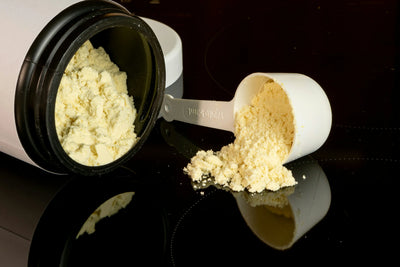Introduction
Dog owners all know that when our furry friends scratch non-stop, have red skin or show slight irritation, we always hope to relieve their discomfort as soon as possible. Hydrocortisone ointment, as a common over-the-counter drug, is often used to treat minor skin problems in dogs, such as eczema, allergic dermatitis or itching caused by insect bites.
Using Hydrocortisone Cream on Dogs: Safety and Application Tips
However, this ointment is not a panacea. Improper use may have the opposite effect and even pose a threat to the dog's health. This article will provide you with a detailed explanation on how to safely and effectively apply hydrocortisone ointment to your dog, covering precautions, application skills, and scenarios to avoid, making you a more considerate dog care expert.
Safety First: Essential Preparations Before Use
The veterinarian is your best advisor
It is crucial to consult a veterinarian as soon as possible before applying hydrocortisone ointment to your dog. The physical condition and skin problems of each dog are different. Veterinarians can determine whether the ointment is suitable for use based on the specific situation of the dog and rule out potential health problems that may be aggravated by its use. For instance, if your dog has diabetes or Cushing's disease (an endocrine disorder), hydrocortisone may pose additional risks. Therefore, never "take it for granted" and apply it directly. Instead, let professionals guide you in the right direction.

Choose the appropriate concentration
The common over-the-counter hydrocortisone ointment available on the market has a concentration of 1%, which is a relatively safe standard concentration for dogs. Do not use products with higher concentrations (such as 2.5% or above) without authorization, as these usually require a veterinary prescription and should be used under strict supervision. Excessive concentration may cause the skin to absorb too much of the drug, increasing the risk of side effects.
Understand the health background of the dog
Before applying the ointment, provide the veterinarian with a detailed account of the dog's health history, including any chronic diseases, allergy history or medications currently being taken. Certain health conditions may make dogs more sensitive to hydrocortisone, such as immune system diseases or endocrine problems. Transparent communication can help veterinarians develop a safer treatment plan for you.
Usage tip: To Achieve the Best Effect of the Ointment
Cleanliness is the key
Before applying the ointment, make sure the affected area is clean. Gently wash the affected area with a mild antibacterial solution (such as diluted iodophor) or soapy water to remove dirt, dander or secretions, and then pat it with a clean towel until it is completely dry. Clean skin can better absorb ointments and also reduce the risk of infection.
Just apply it thinly
The more, the better is not applicable when taking medicine. Just apply a thin layer of hydrocortisone ointment to the affected area and gently massage until it is absorbed. Excessive use not only wastes the medicine but may also increase the risk of side effects, such as thinning of the skin or accidental ingestion after the medicine is licked by the dog. Remember, covering the affected area is sufficient. Do not apply it over a large area.
Tips to prevent licking
Dogs' nature is to lick uncomfortable areas, but licking ointment may cause the medicine to be ingested into the body, leading to gastrointestinal discomfort and even more serious health problems. To avoid this situation, you can use an E-collar to restrict the dog's licking behavior, or cover the affected area with breathable bandages or pet-specific clothing (such as loose T-shirts). These small tools are not only practical but also can make the dog more comfortable during the treatment.
Keep observing and make timely adjustments
After using the ointment, keep a close eye on the dog's reaction. Has there been an increase in water intake or urine output? Has the appetite changed? Is the skin condition improving or deteriorating? If any abnormality is detected, such as vomiting, diarrhea or increased redness and swelling at the affected area, stop using it immediately and contact a veterinarian. Dogs cannot express their discomfort through words. Your careful observation is the guarantee of their health.
Time is limited. Do not exceed the service period
Do not use hydrocortisone ointment continuously for more than 5 to 7 days without the permission of a veterinarian. Long-term use may lead to thinning of the skin, atrophy of hair follicles, and even cause systemic side effects. If the dog's symptoms do not improve significantly within a few days, it may be that the ointment is not suitable or the condition requires more professional treatment. It is a wise choice to visit the veterinarian in a timely manner.
Never Use Hydrocortisone in These Situations
Open wounds or ulcers
If your dog's skin is broken, has deep wounds or ulcers, never use hydrocortisone ointment. Such drugs may delay wound healing and even cause infection. When encountering open wounds, consult a veterinarian first and choose suitable antibacterial or healing promoting drugs.
Suspected bacterial or fungal infection
Hydrocortisone is a steroid drug that can effectively relieve itching and inflammation, but it is powerless against bacterial or fungal infections and may even aggravate the infection by suppressing the immune response. If you notice pus, an unpleasant smell or abnormal flaking on your dog's skin, it might be a sign of infection. Take it to a veterinarian for a confirmed diagnosis immediately. Do not use ointment on your own.
Puppies and pregnant dogs should be treated with caution
The skin and metabolic systems of puppies are not yet fully developed, and their tolerance to drugs is relatively low, with a higher risk of side effects. Similarly, the use of hydrocortisone by pregnant or lactating female dogs may affect the health of their fetuses or puppies. In these cases, use should be avoided unless explicitly permitted by a veterinarian.
Possible Side Effects: Prevention is Better Than Cure
Digestive problems caused by licking
If a dog licks the area where the ointment has been applied, it may experience gastrointestinal discomfort symptoms such as vomiting and diarrhea. A small amount of licking usually does not cause serious consequences, but long-term or excessive intake may lead to endocrine disorders or even more serious health problems. Therefore, preventing licking is of Paramount importance during the usage process.
The hidden danger of thinning skin
Long-term or excessive use of hydrocortisone may cause the skin to become thinner, making it more susceptible to external irritation or infection. This will not only make the dog's skin problem worse, but also may increase the difficulty of treatment. Therefore, it is of vital importance to strictly follow the principle of "small amounts and short periods".
The risk of systemic absorption
Although hydrocortisone ointment mainly acts locally, a small amount of the drug may still be absorbed into the bloodstream through the skin, especially when used over a large area or for a long time. This may cause systemic side effects, such as increased appetite, weight fluctuations or endocrine disorders. Regular communication with the veterinarian and timely adjustment of the treatment plan can minimize these risks to the greatest extent.

Noora Daily Multi with 21 Beneficial Nutrients
Applying hydrocortisone ointment to dogs may seem simple, but in fact, it requires a careful and scientific attitude. By consulting a veterinarian, choosing the appropriate concentration and mastering the correct usage method, you can safely and effectively relieve your dog's skin discomfort. At the same time, knowing when to avoid using it and being vigilant about possible side effects can make you more composed and confident during the care process. Your dog's health cannot be separated from your dedicated company. May this guide help you bring more comfort and happiness to your furry friend!
Can You Use Hydrocortisone Cream on Your Dog? A Vet's Advice
When dogs keep scratching, have red and swollen skin or become restless from being bitten by insects, we, as "dog owners", are always extremely anxious and want to relieve their itching and reduce the swelling immediately. Hydrocortisone ointment, as a common over-the-counter drug, is often regarded as a "savior" for relieving dogs' skin discomfort. But is it really suitable for your furry friend? What special points should be noted when using it? This article will combine the advice of a veterinarian to provide you with a detailed answer on how to use hydrocortisone ointment safely and scientifically, effectively alleviating your dog's skin problems while avoiding potential risks.
Hydrocortisone Ointment: Applicable Scenarios and Safety
When can it be used?
Hydrocortisone ointment is a steroid drug that alleviates symptoms such as skin itching and redness by suppressing inflammatory responses. It is particularly suitable for treating minor skin problems in dogs, such as:
Hot spot (eczema) : Local skin inflammation caused by scratching or moisture.
Mild rash: Skin discomfort caused by allergy or environmental irritation.
Insect bites: Itching and swelling caused by mosquito or flea bites.
For these situations, hydrocortisone ointment can significantly relieve the discomfort of dogs in a short period of time, preventing them from scratching and rolling around on the ground. But veterinarians caution that this is only a "symptomatic treatment" approach; identifying the root cause of the skin problem is the key.

The selection of concentration is important
The common over-the-counter hydrocortisone ointment on the market usually has a concentration of 0.5% or 1%, which is relatively safe for dogs and suitable for short-term use. If a higher concentration (such as 2.5% or above) of the product is required, it must be used with a veterinary prescription and under professional guidance. Excessively high concentrations may lead to excessive absorption of the drug and increase the risk of side effects. Do not "increase the dosage" without authorization.
Veterinary guidance is indispensable
Even for over-the-counter drugs, hydrocortisone ointment is not a panacea that can be used whenever needed. Before use, be sure to consult a veterinarian to confirm whether your dog's skin problems are suitable for this medicine. Veterinarians will conduct examinations to rule out other potential diseases (such as infections or allergens) and develop personalized treatment plans. As a veterinarian put it, "Hydrocortisone ointment can be a powerful tool for treating dogs' skin problems, but only if it is used correctly."
Potential Risks: Side Effects That Cannot Be Ignored
The hidden danger of thinning skin
Long-term or excessive use of hydrocortisone ointment may cause a dog's skin to become thinner, making it fragile and prone to injury or infection. In addition, local hair loss and delayed wound healing are also common side effects. Veterinary dermatologists particularly remind: "Excessive use may turn skin problems from 'minor troubles' into' major issues'. Strictly following medical advice is the key."
Systemic effects need to be guarded against
Although hydrocortisone ointment mainly acts on the surface of the skin, in some cases (such as large-scale application or long-term use), the drug may be absorbed into the bloodstream, causing systemic side effects. Common symptoms include:
- Increased water intake and urine output;
- Abnormal appetite or weight fluctuations;
- Abdominal distension or behavioral changes.
Although these conditions are relatively rare, if your dog shows the above symptoms, you should stop the medication immediately and contact a veterinarian.
Special diseases require extra caution
If a dog has diabetes, Cushing's disease or other endocrine disorders, hydrocortisone may interfere with its metabolic balance and aggravate the condition. Before use, provide a detailed account of your dog's health history to the veterinarian, including any chronic diseases or medications being taken, to ensure the safety of the treatment.
Usage Tips: Tips for Scientific Care
Consult a veterinarian to clarify the plan
Before applying hydrocortisone ointment, the veterinarian will help you confirm whether your dog's skin problem is suitable for this treatment and provide specific usage suggestions, such as applying it 1-2 times a day, with a thin layer each time. Strictly follow the doctor's advice and avoid the misconception that "applying it several times will yield better results".
A "protective net" to prevent licking
It is a dog's nature to lick the affected area, but licking the ointment may cause the medicine to be ingested into the body, leading to digestive problems such as vomiting and diarrhea. To avoid this situation, you can:
Use the E-collar to restrict the licking behavior of dogs;
Cover the affected area with a breathable bandage or pet-specific clothing;
After applying it, stay with your dog for a few minutes to distract them.
These little tips can make the treatment smoother and also reduce the dog's discomfort.
Cleaning the affected area can achieve twice the result with half the effort
Before applying the ointment, gently clean the affected area with a mild antibacterial solution or soapy water to remove dirt and secretions, and then dry it thoroughly. Clean skin can better absorb medicine and also reduce the risk of infection.
Short-term use to avoid "exceeding the expiration date"
Unless specially permitted by a veterinarian, the application period of hydrocortisone ointment should generally not exceed 5 to 7 days. Long-term use may lead to the accumulation of side effects and even complicate skin problems. If the dog's symptoms do not improve, visit the veterinarian in a timely manner and adjust the treatment plan.
These Situations Must Never Be Used!
Open wounds or severe damage
If a dog has open wounds, ulcers or burns on its skin, hydrocortisone ointment is definitely not suitable for use. It may delay healing and even cause infection. For such situations, priority should be given to antibacterial or healing promoting drugs and they should be handled under the guidance of a veterinarian.
Caution is needed for suspected infection
If a dog's skin has pus, an unpleasant smell or abnormal flaking, it may be a sign of bacterial or fungal infection. Hydrocortisone not only fails to treat infections but may also aggravate the condition by suppressing the immune response. In such a situation, take the dog to the hospital for a check-up as soon as possible. After identifying the cause, receive treatment.
Special attention should be paid to puppies and pregnant dogs
The skin and metabolic system of puppies are relatively fragile, with lower tolerance to drugs and a higher risk of side effects. Similarly, the use of hydrocortisone by pregnant or lactating female dogs may affect the health of their fetuses or puppies. In these cases, use should be avoided unless explicitly permitted by a veterinarian.
Veterinarian's advice: Use medicine scientifically to safeguard health
A senior veterinarian once summed it up like this: "Hydrocortisone ointment is a good helper for treating dogs' skin problems, but it is not a 'panacea'." Only under the guidance of a veterinarian and in combination with the correct usage method can it achieve the maximum effect while avoiding risks. Another veterinary dermatologist also emphasized: "Each dog's condition is different. Only by following the doctor's advice and having regular check-ups can the treatment be both safe and effective."
Hydrocortisone ointment can provide quick relief for a dog's minor skin problems, but it is by no means a panacea that can be solved simply by applying it casually. By consulting a veterinarian, mastering the scientific usage methods and being vigilant about potential side effects, you can make your dog safer and more comfortable during the treatment process. Your dog's health cannot be separated from your careful company. May this guide help you become a more caring "guardian of your furry friends", making every day of their lives full of vitality and happiness!
Hydrocortisone Cream for Dogs: Benefits, Risks, and Alternatives
As a dog lover, it always makes one feel heartbroken to see a dog scratching non-stop due to itchy or swollen skin. Hydrocortisone ointment, as a common over-the-counter drug, is often used to relieve the skin discomfort of dogs. But just how "magical" is it? What are the points that need special attention when in use? Is there a milder alternative? This article will provide you with a detailed analysis of the benefits and risks of hydrocortisone ointment, and introduce some alternative options to help you find the safest and most effective way to care for your furry friends.
The Benefits of Hydrocortisone Ointment: Quickly Relieve Skin Discomfort
Quickly relieve itching and reduce inflammation
Hydrocortisone ointment is a topical corticosteroid, renowned for its powerful anti-inflammatory and anti-itch effects. It can effectively relieve the skin discomfort of dogs caused by the following problems:
Insect bites: Redness, swelling and itching caused by bites from mosquitoes, fleas, etc.
Mild rash: Skin erythema caused by environmental irritation or mild allergy.
Local itching: such as hot spots (eczema) or scratching caused by seasonal allergies.
After application, the ointment can quickly reduce the inflammatory response, allowing the dog to stop "rolling around on the ground" and regain calmness and comfort. For short-term and minor skin problems, it acts like a "first aid assistant", bringing immediate relief to the dog.
Wide range of application
Whether it is a skin reaction caused by pollen allergy or a mild eczema resulting from a humid environment, hydrocortisone ointment can come in handy. Its over-the-counter nature also makes many pet-owning families regard it as a regular medicine at home, which is convenient for use in emergencies.
Usage Risk: The "Side Effect Trap" that cannot be Ignored
Although hydrocortisone ointment is highly effective, it is not without risks. Understanding these potential issues can help you use them more carefully and protect your dog's health.
The skin becomes thinner and more fragile
Long-term or excessive use of hydrocortisone ointment may cause a dog's skin to become thinner and more fragile. Thinner skin is not only more prone to being scratched or infected, but may also lead to problems such as hair follicle atrophy and local hair loss. Once this situation occurs, it may make the original skin problems even more difficult to handle.
Mask the infection and delay the treatment
Hydrocortisone ointment is good at relieving inflammation and itching, but it is powerless against bacterial or fungal infections and may even mask the symptoms of infection by suppressing the immune response. If a dog's skin problem is actually caused by an infection, blindly using ointment may worsen the condition and miss the best treatment opportunity.
The hidden dangers of systematic absorption
Although the absorption amount of hydrocortisone ointment used locally is relatively small, when used over a large area or for a long time, the drug may enter the bloodstream, causing systemic side effects. Serious consequences include:
Cushing's disease: An endocrine disorder caused by excessive steroids, characterized by polydipsia, polyuria, abdominal distension, etc.
Diabetes risk: It may interfere with blood sugar metabolism, especially having a greater impact on dogs that already have metabolic problems.
Adrenal suppression: Long-term use may suppress the adrenal function of dogs and affect their stress response.
The "unexpected surprise" of local stimulation
Some dogs are sensitive to hydrocortisone and may experience local irritation reactions after application, such as redness, swelling, blisters, peeling, increased itching and even urticaria. If these symptoms are found, stop using it immediately and consult a veterinarian.
Essential Preparations Before Use: A Veterinarian is Your "Peace of Mind"
Before applying hydrocortisone ointment to a dog, consulting a veterinarian is an indispensable step. The veterinarian will conduct an examination to confirm whether the dog's skin problems are suitable for using this medicine and provide personalized usage suggestions, such as:
Concentration selection: Generally, 0.5%-1% over-the-counter ointments are recommended. High-concentration products require a prescription.
Usage frequency: 1-2 times a day, apply thinly to the affected area.
Usage duration: Generally no more than 5 to 7 days. Regular follow-up is required for long-term use.
In addition, the veterinarian will also inquire about the dog's health history to rule out diseases such as diabetes and Cushing's disease that may increase the risk, ensuring the safety of the treatment.
Alternative: Milder and Safer Care Options
If you have concerns about the side effects of hydrocortisone ointment or if your dog's skin problems are not suitable for steroid drugs, you may consider the following alternatives.
Pet-specific ointment
There are many anti-inflammatory ointments specially designed for pets on the market. These products have been optimized based on the skin structure and physiological characteristics of dogs, with lower side effects and higher safety. For example, pet ointments containing low concentrations of steroids or other anti-inflammatory ingredients can provide dogs with hydrocortisone effects under the guidance of a veterinarian.
Natural therapy: Gentle and reassuring
For mild skin irritation, natural ingredients are often a gentle and effective choice:
Coconut oil: It has moisturizing and mild antibacterial properties and is suitable for relieving dryness or mild itching.
Aloe Vera gel: Pure natural aloe vera can soothe skin inflammation and reduce redness and swelling. Pay attention to choosing products without additives.
Oat bath: Add oat flour to warm water and give your dog a bath. It can effectively relieve the itching caused by allergies.
Although these methods take effect more slowly, they are more friendly to dogs with sensitive skin and have almost no side effects.

Other medications: Professional treatment is more precise
If a dog's skin problem is rather complex, the veterinarian may recommend the following prescription drugs:
Antihistamines: They are used to control itching caused by allergies and are suitable for long-term management.
Antibiotics or antifungal drugs: Targeting bacterial or fungal infections and addressing the root cause of skin problems.
Immunomodulators: such as tacrolimus ointment, are suitable for chronic skin diseases and have lower side effects than steroids.
These medications need to be prescribed by a veterinarian, and the dosage and course of treatment should be adjusted according to the specific condition of the dog.
Usage tip: To achieve the best effect of the ointment
To ensure the safety and effectiveness of hydrocortisone ointment, the following points cannot be ignored:
Clean the affected area: Wash the affected area with a mild antibacterial solution, remove dirt and dry it.
It is advisable to apply a thin layer: Only apply a thin layer to the affected area and avoid excessive application.
Prevent licking: Use Eliza rings or breathable bandages to prevent dogs from licking and accidentally ingesting.
Observe the reaction: Closely monitor the dog's skin changes and behavior. If any abnormality is detected, stop using it immediately and contact a veterinarian.
Hydrocortisone ointment offers a quick and effective solution for minor skin problems in dogs, but its use requires caution and a scientific attitude. By understanding its benefits and risks, consulting a veterinarian, and mastering the correct usage method, you can make your dog's treatment safer and more comfortable. If you prefer gentle care methods, pet-specific ointments or natural remedies are also good choices. No matter which plan you choose, your dog's health cannot do without your careful observation and dedicated company. May every furry friend have smooth and healthy skin and waggle their tails happily!





